Please believe me
There are no bad results here. As said previously, all of the brands of opamps improved the stock sound of the components. Readers should not be looking for a “winner” in the sense of which I would buy, because I would buy them all! I have told you my methodology; still, people will send me private messages asking which one I liked best, as though I was fluffing the results for the article but privately had a strong preference. Please believe me when I say that all the outcomes with the three brands are valid, and that I end up not using them in homogenous sets, but mixed, as previously discussed. Burson, Sparkos Labs and Sonic Imagery will not be impressed that I end up mixing them, but I do in my system what results in maximum performance, not what impresses a company. I consider all three brands’ products worthy of recommendation.
Other emails I get follow this pattern: “I have x, y, and z components. Which set of opamps would you recommend for me?” Let’s pause for a second and think; how am I supposed to know your innate system sound, your approval or disapproval of it, your goals for change, the precise interaction of each set of opamps with your components (especially if I have not used them) and whether it will satisfy you? In other words, it’s your decision, not mine. I’m giving you the information to make the decision, so you make that decision.
Now, that doesn’t mean I’m callous and could not care less what happens to your opamp exploration. People have been contacting me in regards to my highly efficacious Schroeder Method of Interconnect Placement, and I enjoy those conversations. They also ask, “Which brand of cables do you recommend to try Schroeder Method,” and I end up telling them the same thing; it’s their choice. I describe the effects, but they have to choose. Audiophiles want the perfect solution, as though it is a point to be reached, when in reality sound quality and associated characteristics are on a spectrum, somewhere along which the system falls. Audiophiles have to get over the notion that they are building a perfect rig, or that ideal sound is a destination rather than a particular location in a universe of sound quality.
Some are also afraid to try things or make a “bad” decision. I made dozens and dozens of decisions, purchases, trials, that ended up altering the system but were not ultimately my final system. I do not see polling the participants on forums as advantageous, as they will influence you to move in directions they think are best, not necessarily the direction you think is best. Often I see popular suggestions that yield mediocrity rather than an extreme solution that yields superior results. For these reasons, and because the opamp rolling is relatively cheap, even if you buy more than one set, make your decision and if you are not happy buy another set and mix them. You will most likely end up thrilled at the outcome.
House sound, and “cooking with opamps”
My methodology in using both cables and opamps is to establish as best I can a baseline expectation of the sound with a variety of systems. For this article I used three speaker systems of different genres, all reviewed; the Kingsound King III electrostatic, the PureAudioProject Trio15 Horn 1, and the Legacy Audio Whisper DSW Clarity Edition. In my experience the characteristics of the opamps described below transfer to any speaker system. The front end was consistent: Small Green Computer sonicTransporter and SONORE Signature Rendu systemOptique; EE Minimax DAC Plus or EE Minimax Tube DAC Supreme; and Kinki Studio EX-M1+ Integrated Amplifier. All cabling was Clarity Cables with the exception of one set of Audio Sensibility double ICs (Schroeder Method).
When it comes to tuning the system, once I have a handle on the essential character of the cables or opamps I begin to selectively introduce alternative ones in a limited fashion. If the system moves in a direction I do not like, I reverse the change and try another. This is very time consuming, but it yields the only straightforward movement toward sound I will adore when using cables and opamps. The potentially disruptive aspect of this is that when the system componentry or speakers change, a redistribution of opamps may be necessary. If the favorite baseline set is known, I can retreat to that set and work off of it. You have to love building systems to do this.
I am not suggesting that this is the only valid way to proceed. I am indicating that it is the way to proceed if the goal is the ultimate improvement of your components with discrete opamps. As with many other things in life, you get the results you deserve based on how much you are wiling to invest in money, time and effort. In the arena of audiophilia, when it comes to rolling opamps the first two are relatively low and the last can be relatively high (you can see why I pay no attention to burn in, as it would make the process intolerably long, and in my opinion change nothing in regards to the outcome). You make the decision how far you want to push the experimentation.
As with the survey of discrete opamps I did years ago, so also this time the “house sound” of all the brands of opamps appealed to me for various reasons. Just as an audio system can be set up in a variety of appealing ways, so also can use of the opamps reveal lovely alternatives. In order to get a handle on what each brand of opamps did, I will describe holistically their effects.
Finally, years ago I did not have the luxury of using discrete opamps in a component other than a DAC. This time, however, I heard the house sound of the opamps in both the DACs and the Kinki integrated. I was not surprised to find that the opamps retained their characteristic sound qualities regardless of which component they were inserted into. In this respect they are similar to cables that retain their characteristics regardless of which components they serve.
Burson Audio Supreme Sound Opamp V6 Vivid
Warm and full-bodied.
The Burson V6 series of discrete opamps are the warmest and most full-bodied sound of the three brands. One might consider their character to be similar to vacuum tubes that can be rolled into preamps or amps, without the distortion of tubes. The Burson is the most forgiving of the three brands, and as such they give up a degree of clarity in respect to the other two. However, they also avoid the impression that there is too much detail or definition, or that the sound has become too clinical. The Vivid opamps have less midrange presence, and as such slightly emphasize the top and bottom end of the frequency spectrum. The Classic opamps are balanced across the spectrum. If you struggle with a nagging sense that the system needs to perk up, but wish to avoid a turn toward sterility, then try the V6 Vivid. If you wish to calm a system, try the V6 Classic.
Sonic Imagery Labs
Extremely revealing.
At the other end of the spectrum in terms of attributes are the Sonic Imagery opamps.
These are the most “surgical” in terms of ruthlessly revealing of details in the music. They are well balanced frequency-wise and have notably more extreme definition and dynamics than the Burson opamps. Whereas the Burson opamps might be mellower, the Sonic Imagery opamps pull a component toward being more aggressive. The sense I had when listening to them was that the sound took on the nature of what a studio technician may hear when recording in the studio. There is immediacy, but no hiding detail. The effect is as though a strong light is used to illuminate a room to chase away all shadows. This will appeal to a person who wishes to hunt down every acoustic nuance in a piece of music.
The Sonic Imagery was the most transparent of the opamps, but potentially could be the most strident with edgier music. These would be an excellent choice for persons wishing to obtain the most definition possible, and who wish to avoid a mild, tube-like result. This individual would perhaps need to tone down the rig, if necessary, with other means, such as cables, phono pre, etc.
Sparkos Labs
Powerful, but polite.
The Sparkos Labs opamps split the difference between Burson and the Sonic Imagery. They are not the last word in either fullness or dynamics, but have a very balanced, pleasing blend of those attributes, as well as not sounding clinical.
Whereas the Burson and Sonic Imagery opamps have a pervasive “pull” toward a particular set of sonic characteristics, the Sparkos opamps amplified the components’ performance with less of a sense of skewing the stock sound. The effect is similar to an amplifier maker using similar topology for a 200wpc amplifier to improve upon the 100wpc model. While there are changes, they seemed more native than foreign to the component. For those timid about the influence of the discrete opamps and who do not want to push the stock sound far from the current set of characteristics, this may be your best brand for an introduction.
I reiterate that all three of these brands’ products improved upon the stock sound of the Minimax DAC and the Kinki Studio EX-M1+. Especially as the EX-M1+ was a new component to me, I had opportunity to compare the stock unit’s sound with each set, and I would prefer to hear any of these sets to the stock unit’s sound. How can that be when they confer such different effects? The answer is simple; there are improvements across the board in all parameters of performance with all three sets as opposed to the stock IC opamps. Though each brand’s opamps may tug the sound in a particular direction, the improvements, especially in clarity, immediacy and fullness, are difficult to abandon. Going back to the stock IC opamps would be a step toward poorer sound.
But what of the potential issue of the opamps pulling the tonality toward one end of the spectrum, or the balance of the frequency spectrum being weighted differently on the upper end or bottom end? This is why I recommend a suite of opamps from all the manufacturers. The mixing of these brands not only confers the ability to address all tonal considerations, it also allows for superior fine tuning in the areas of cleanness/clarity, dynamics, and frequency extension, among other considerations. Any potential downside associated with one brand’s house sound is compensated for when all these discrete opamps are in play; collectively their performance is distinctly superior to any one brand. None of the opamp manufacturers have the golden opamp, but when used cooperatively together they are the golden opamp set.
- ← Previous page
- (Page 3 of 4)
- Next page →

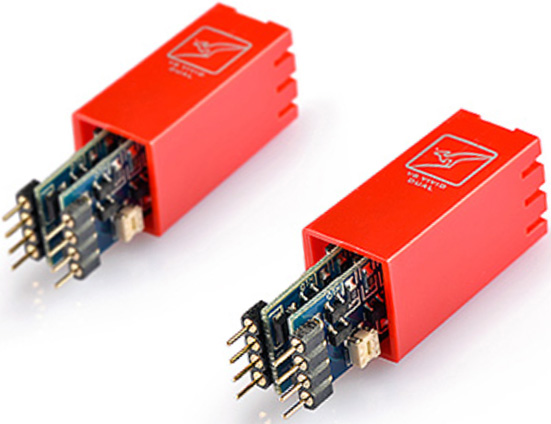
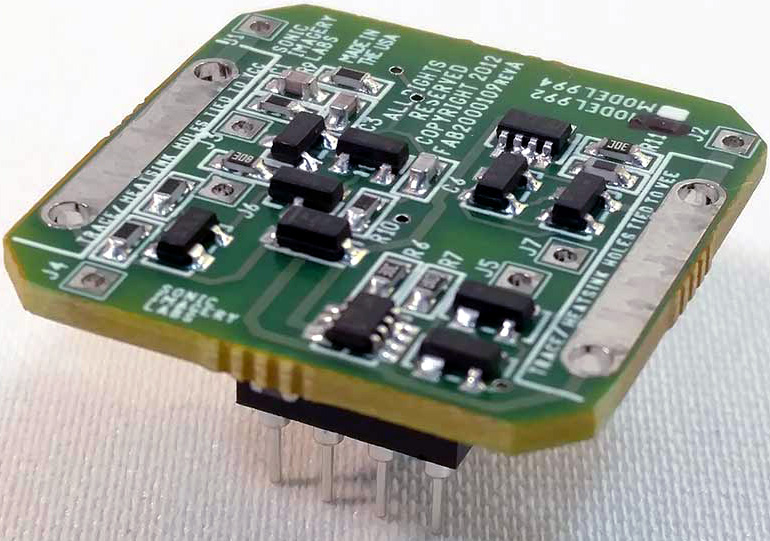
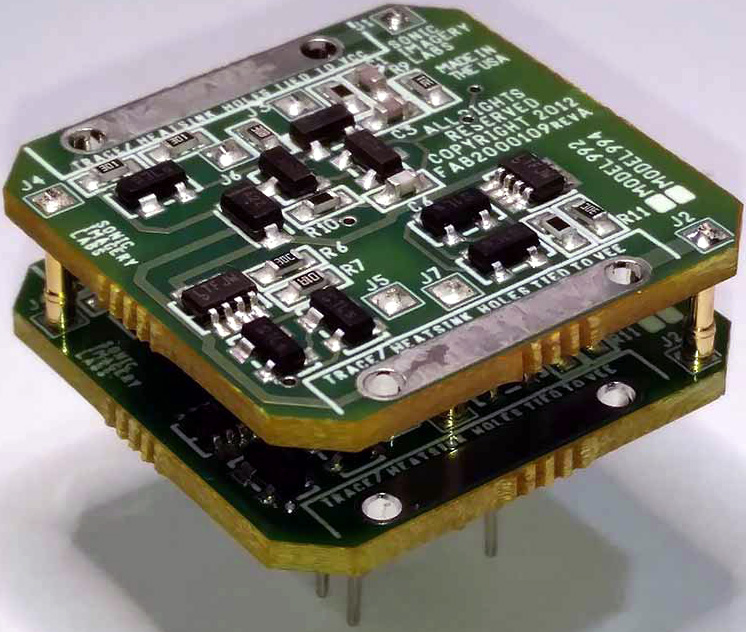
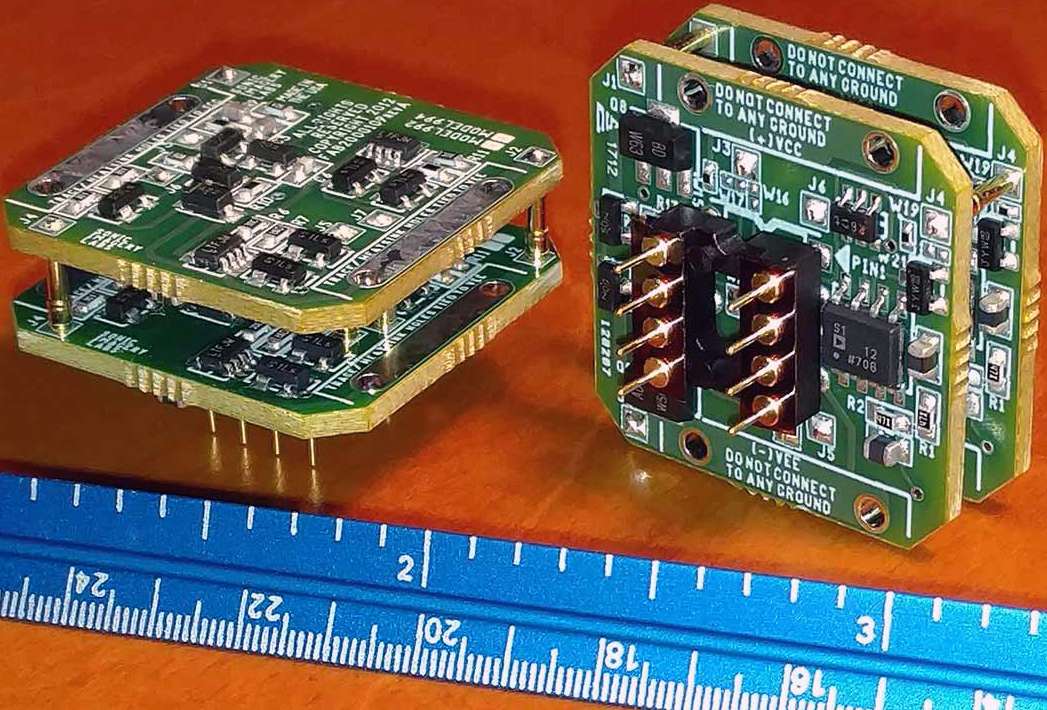
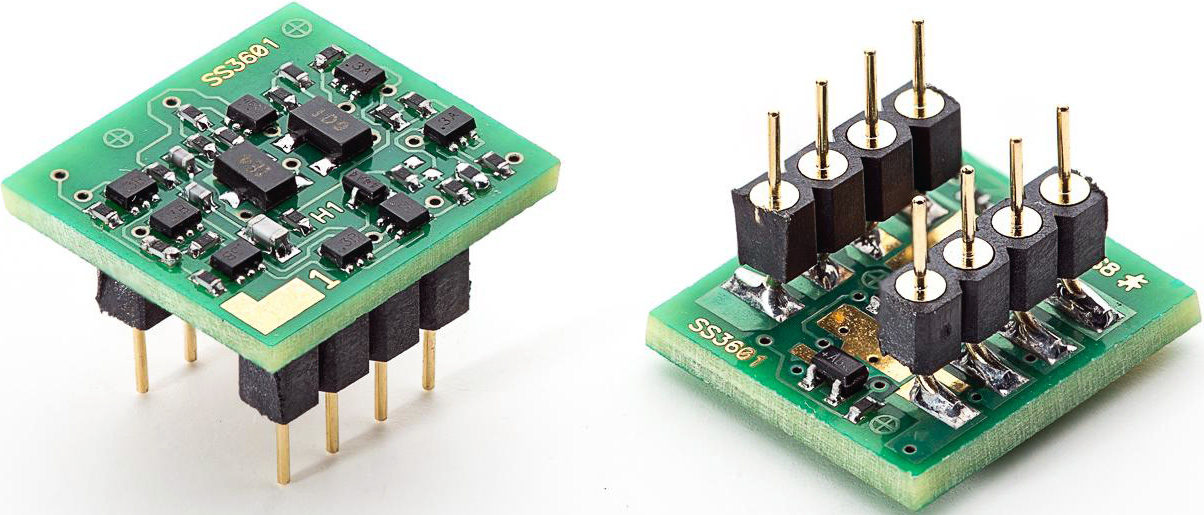
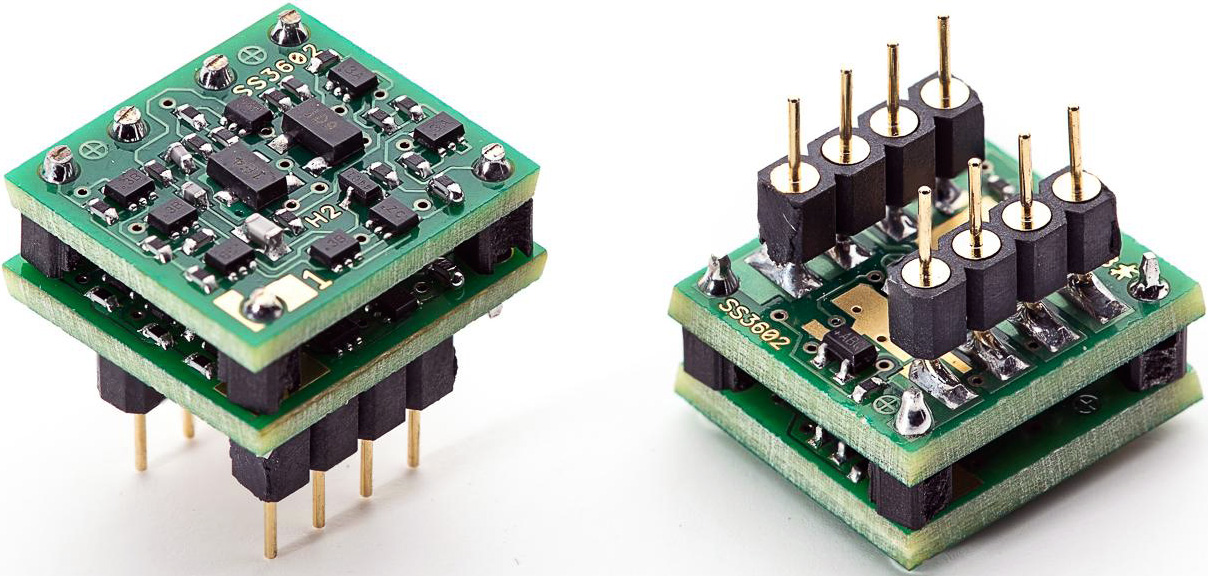
I have a degree in electronics and when I see the word discrete used along with opamp, it means it is a circuit that is built from individual, separate components, as opposed to one that is integrated. You are speaking of one that is socketed as opposed to one that is soldered in place. Electronics tech or engineer doesn’t use the term “discrete” in this way. Furthermore, if the opamp has sufficient GBP and high slew rate, low noise floor, to accurately reproduce signals in the audio band, using a better, more expensive component will likely not improve the sound. If you start with a BB OPA2134, which is more than plenty in the aforementioned specs, replacing will only make your wallet thinner… nothing else.
As far as the BB OPA2134 goes, this evaluation is relevant: http://audioreviews.blogspot.com/2005/10/flavors-of-audio-op-amps.html
Mike,
God’s Peace,
I will let you take up your concern about the nomenclature of these opamps with the three companies reviewed, as they all refer to their own products as “discrete” opamps. I believe my references in the article are correct, as I do not confound the terms “discrete” and “socketed”.
I have no interest in debating what I have recommended. If you wish to move toward state of the art sound, and $200 is too much to spend to put your opinion to the test, then we do not have much else to discuss. 🙂
Blessings,
Douglas Schroeder
Doug,
Sorry, my mistake.
Mike
Oh yes! Thank you Douglas for doing this discrete opamp thing! Also, mind sharing a little on what you think about the EX-M1+? Particularly the sound signature & depth of sound stage?
YYw,
God’s Peace to you,
Thank you for your kind comment. There will soon be a full review of the EX-M1+ here at Dagogo.com
Blessings,
Douglas Schroeder
Having heard these opamps one not even mentioned ,and in my opinion and others is
A Newer company from Poland selling these on Ebay. Staccato which use In part Jfets in the input and output for higher output current running in pure class A with very nice large verticals heat sinks .
Between 100-150 hours to run these in . These were the clear winner everythung just sounds more real
Waller richer and detailed. I had thought previously the Sparkos was best not even their new pro
Series are as good .and they plan on coming out with. A reference model after the new year possibly.
Hello Paul,
Vert interesting experience, did you try it on the kinki exm1+? Which model are you using, I will be happy to know more about your experience after few months.
Hi Paul, how did you go fitting one of the Staccato dual op-amps (the OSH-DHb?) in the EX-M1. They seem like they might be a very tight fit from my measuring. I currently have all Sparkos. Did you end up with all four singles being Staccato as well? I’m not sure whether to pull the trigger on any/all of them. Postage is a killer to Australia, as well. Kind regards, Peter.
First off, I was remiss in not thanking Doug for writing this insightful article when I asked a follow up question of Paul re Staccato op amps. Thank you! I own a second hand EX-M1 that had the stock op amps changed to a complete Sparkos set (4 singles and a dual). The detail and dynamics that they extract from my system is exceptional. Every now and then, though, I felt they were almost too clinical on some material and I was interested in trying the Staccatos after Paul’s comments and the AudioFool review. I ended up buying 4 single Staccatos (OSH) but not the dual, as I wasn’t sure if it would fit in the EX-M1. The Staccato singles fit easily in the EX-M1 without requiring risers and after a couple of days of listening I can report that, to my ears, in my system (Audirvana, Cambridge CXN, EX-M1, PMC twenty5.21s and a REL T7/i sub), the result, to date, of 4 Staccato singles with the Sparkos dual is definitely a more musical experience that seems more at ease and more coherent. Trying a Staccato single in the EX-M1 dual slot seems to suggest that both the Staccato dual OSH-DHa and the OSH-DHb will fit in the EX-M1 if the nearby cable loom is tucked out the way. The OSH-DV will not fit due to the orientation of the boards. Will I go all Staccato? Probably not. I like the transient detail the Sparkos dual provides. Anyway, I hope this helps someone – remembering the caveat that all these tweaks are preference, hearing, system and room dependent. Thanks, again, Doug. Have fun.
Fantastic article! Thank you for taking the time to do this and explain the process as well as the sound characteristics of each manufacturer’s op amps. I tried all three and ultimately settled on a full set of Burson V6 Classics for my EX-M1. They sound great with my Klipsch speakers and give me the sound I was wanting.
Greg,
God’s Peace,
It is this kind of reaction that gives me immense satisfaction in writing! Thank you for your feedback!
If you ever get bored with the sound and want a change, you have the capacity to alter the system. It’s got great flexibility. Also, if you ever change a set of cables or component, or speakers, return to the opamps and try some other combinations. They confer such a powerful change that it is worth the effort.
Blessings,
Douglas Schroeder
I have complete set of staccato opamps in my Kinki for a few days now.
Installation was easy.
[img]https://i.imgur.com/Mp7Fb8y.jpg[/img]
Good to hear, Caspar. What are your thoughts on the sound quality? Did you replace the stock op amps, or had you already replaced them with something else? The more I listen to my system (see above), the more I like the Staccatos in the Kinki. They just sound more natural and musical than the Sparkos, to my ear. I also find the soundstage depth seems better. I am now thinking I will probably buy a Staccato dual 🙂 Regards, Peter.
Hi Peter,
sorry for the late reply. I just read your post on stereo.net.au.
I replaced the stock OPamps, but did not compare tu Sparkos or Bursons.
The Staccatos sound great. Very natural with a good balance between definition and timbre .
Thanks for letting me know, Caspar. I have a Staccato dual on the way from Poland at the moment to “complete the set”. You state their attributes very well – “a good balance between definition and timbre”. Regards, Peter.
I’ve recently bought EX-M1 and replaced stock opamps to Staccatos (full set). Even from the start the soundstage was deeper comparing to stock. I know the quality of Staccato as I have them in my DAC (the previous version). Still have to wait a bit before the final judgement. There is one thing I need to ask – the heat. With the stock opamps the cover was basically cold, which was quite surprising to me. With opamps replaced – it is warm. Should this be a concern? Do you have any experience with this? I would really appreciate the feedback as I don’t want to damage the amplifier.
Thanks in advance
MikeG,
God’s Joy,
That sounds like a nice experiment! I cannot tell you, however, about the heat question. I have not had issues with any other opamps, and have not tried the Staccato opamps.
Blessings,
Douglas Schroeder
Hello Douglas,
I just purchased the Kinki EX-M1+ In speaking with the Sparkos folks about opamps, he stated that the dual opamp in the unit was not in the signal path so I should not bother changing that one. So I just ordered four singles. I’m loving the improvement that it’s brought. Incredible! I also have the Burton’s and the sonic imagery standing by for trial but I’m so smitten with the sound I’m getting now that I can’t bring my self to take the sparkos out!
I was curious what you thought about that or if you can say if you heard any difference in changing just the dual. Seems pretty likely that you would not have changed just the dual and listened.
Michael,
God’s Peace,
It has been a while since I have done opamp rolling in the EX-M1+, but I have some (top secret!) more opamps on the way currently. So, I will be revisiting rolling, and will pay special attention to the dual opamps. I do recall that different combos of dual and single most definitely DID bring substantive changes over whole sets. So, I’m not sure I concur with the idea of leaving out the single opamp. I will revisit it. BTW, I would certainly not avoid changing an opamp simply because it was not in the signal path. That is the same kind of logic that suggests changing power cords are of no use. Anyone who has changed them has heard for themselves what upgrades to the system outside of the signal path can do!
Oh, yes, I would change just the dual and listen! I did all sorts of such experimentation with DACS prior, and will revisit it with the new opamps on the way in the EX-M1+.
You have only scratched the surface of what you will be hearing! You have two other sets, and then, if you have the duals of those company’s opamps, you have a lot of hybrid combos to hear! You will be astounded at how much variance comes from such rolling of opamps. Have fun! Be purposeful, and preceise; always know the orientation is correct. Take particular care with the Burson opamps, and perhaps mark them with permanent marker, like I did, otherwise its too easy to place them 180 degrees opposite of correct position.
Blessings,
Douglas Schroeder
hi, great infos about discrete opmap, but i want to know which one has the wider soundstage? not mentioned in review. please rank wider to narrow. thanks
Armuto,
God’s Peace,
The reason I do not discuss width of soundstage is because the opamps do not dramatically influence the width, as in wider/narrower, appreciably. They change dynamics, precision/cleanness, and tonality as the most impactful aspects of sound, but I have not had the experience of greatly widened soundstage by using four different brands.
The function of width of soundstage is imo controlled by other aspects of the components, and components that do not use socketed opamps. The placement of the speakers and relation of the listening chair to the speakers are the dominant factors in the soundstage. Toe in and Toe out are critical in widening or narrowing the soundstage. I also strongly recommend that if the speakers are short, sitting below ear level, then there should be a lift put under the front to slope the baffle backward and lift the soundstage. Conversely, with very large speakers that may launch much of the sound waves over one’s head, I always place shims/lifts in the back to slope the front baffle downward toward the ears. This greatly improves the cleanness and focus of the center image and will make the soundstage more consistent across left-center-right.
I have found that the depth of soundstage IS greatly influence by the precision of the opamps, quite literally allowing to hear deeper into the venue/recording space. The size/fullness of instruments on Left/Right also are more generously sized and more densely rendered with superior opamps. But, I do not hear them relocated to a wider position. In fact, I hear more information in the intermediate locations, between Left and Center, and between Right and Center, filled better with superior opamps.
I suggest you do not seek opamps based on the change to width or narrowness of soundstage. I suggest you seek them for qualities I have discussed above, and use components such as amps, and positioning to attain the soundstage width you desire.
Blessings,
Douglas Schroeder
Hi Doug,
Thanks for your review, it was very revealing.
I just bought a new Kinki EX-M1. I do like the sound, but coming from an Anthem Pre1 and a Quad 909 power combo, I strongly believe that the Ex-M1 sound can be improved.
I was thinking what discrete opamp (or mix of them) will do the trick with my Wharfedale Evo 4.4 speakers. These speakers are very laid back, but also very natural sounding. I like them a lot.
They need power and an energetic presentation from the electronics to really wake up and shine.
Based on your experience with opamp rolling with the Kinki, what combination will deliver the best for what I’m looking for?
I know that the recommendation will be to buy several ones and start testing, but currently I can only afford a for 4 single opamps and 1 dual (could be of mixed brands) so any guidance will be extremely appreciated.
Regards
Pablo
Pablo,
God’s Peace,
Thank you for the complement! You ask a difficult question because of the inability to state exactly what the outcome will be when mixing in opamps with your particular components, and what you would consider pleasing sound.
I recommend you wait for a bit until my article in regard to the Staccato discrete opamps is published. Then you will have a better sense of direction in terms of opamps. If you do not wish to wait, a combo I enjoyed was four single Sparkos Lab and a dual Burson V6 Vivid opamp.
Blessings,
Douglas Schroeder
Thanks Doug for your prompt reply.
Today I was listening extensively to my Kinki EX-M1 and I love it.
I just miss a little bit of presence in the midrange, particularly in the mid-bass region.
I guess I miss a little bit of the British sound (PRAT) I enjoyed in my previous system.
Based on your experience, which opamp do you think will favor this aspect the most?
A friend of mine told me that the Staccato could be the ticket.
Regards
Pablo
Hi Douglas, I have had Kinki EX-M1 in silver colour one week for home demo. If it would be in black I will get it but I needed it in black colour. I have sent it back to the seller after one week and they sent me EX-M1+ version with some financial surcharge from my part. Anyway I did not need additional functions of + version but never mind are there 🙂 But I have question. I still have feeling the previous Kinki EX-M1 without plus in silver color sounded little bit different (better to me) than version with plus what currently I have. Is it possible or is it only my imagination or wrong sound memory?
In other words I can’t get rid of the impression that the previous version without + played more dynamic with more defined bass. I have paired kinki with Monitor Audio Gold 300 quite big speakers. Between amp changes I did not to touch anything! Everything is spot on place. Therefore I´m thinking to change all OPAMP to STACCATO with expectation more deeper bass response?? Thanks for reply. God bless you! Jan
Jan,
God’s Peace,
Thank you for the reply! Sorry, I can’t help you with your struggle in regard to the color. Regarding the impression about the sound of the two units, I’m afraid I cannot confirm general feelings. The only legitimate comparison to know would be a side by side test. I doubt the newer version would be a technically worse performer. Would one match up a bit better or worse with your speakers? Again, to be sure you would have to do a side by side comparison. In terms of tonality on such similar units, you can always adjust with a cord or two.
Regardless, the Staccato opamps are distinctly superior to the stock ones. I strongly recommend that upgrade.
Blessings,
Douglas Schroeder
Many thanks Doug! Regarding to Kinki sound It could be only my weak sound memory because between those two units passed 3 days 🙂 What is different is PCB in your version and my new 2021 version of EX-M1. In new the version are slots closer to capacitors than in older version. There is question how many risers I would (must) use for staccato or sparkos? Many thanks and God with you.
Jan
R
Jan,
God’s Peace,
Good observation in regard to risers. You are correct that the little caps do get in the way of the opamps being seated. I was concerned about the opamps being so close to each other that they touched. I was worried of a short circuit, but I was informed by Staccato that the black parts of the opamps are neutral and can touch each other. Based on configuration I had to use three risers on one opamp and two on the other channel adjacent. I cannot tell a difference sonically. I always keep about 10 of the risers handy just in case of need, and in case one’s legs get bent when removing them. Also, make absolutely sure the notch in the riser is oriented properly to the pin 1 location on the opamps! When the risers are oriented properly, it’s easier to locate pin one for insertion.
There are some DACs which may accept others such as Sparkos or Burson, but not the Staccato because they are too wide to fit side by side. One such DAC is the original Eastern Electric Minimax DAC. I can just get the Staccato opamps to fit by using risers in the EE Minimax Tube DAC Supreme. While the Staccato opamps are tight in the EX-M1+, it’s doable. Terrific sound!
Blessings,
Douglas Schroeder
Hi Douglas, it’s been a while since you published this article on rolling op-amps. However, as I just found this article, I have questions regarding combining Burson V6 single Vivid and Classic in Kinki Studio EX-M1.
On the article, you mentioned: “a full set of Bursons, with a mixture of a V6 Vivid Single and a V6 Classic Single per channel and a V6 Vivid Dual, brought a pleasingly rich timbre.”
In which slot should I put the Classic and in which slot should i put the Vivid?
My Kinki EX-M1 is the newer model, hence in each channel the single opamp slots are configured ‘side by side’ (in the older model, I guess the one you reviewed, they are configured as ‘one closer to front side and the other closer to back side’)
Hope my question is clear enough 🙂
Thanks Douglas.
Best,
Rizal S
Rizal,
God’s Peace,
I recall correctly, there are four singles used and 1 double used for a full complement of opamps for the EX-M1+ (the version I have). For each channel, I placed a Burson Vivid and a Burson Classic. The only double was the V6 Vivid dual.
As to where specifically they are placed in your new unit, I do not wish to speculate. I direct you to call Kinki Studio, as I believe they will be willing to help you with the placement, especially since this is a third iteration of the integrated amp.
If I recall correctly, the original integrated amp was the EX-M1 and it was updated to the EX-M1+. Now, it appears that Kinki Studio has reverted to calling the third, newest version, the EX-M1. This sort of thing is confusing to the audiophile community.
Blessings,
Douglas Schroeder
Hi Douglas,
Thank you for your prompt response.
I guess my question is: as there are 2 single opamp slots in each channel (for simplicity namely slot #1 and slot #2), would it make any difference to put Classic in #1 and Vivid in #2 or should it be Vivid in#1 and Classic in #2?
Thanks Douglas and have a good weekend!
Rizal,
God’s Peace,
Once again, you will want to verify with Kinki Studio, as your unit is technically different than mine. On my unit, I can place the Vivid/Classic opamps in whichever paired spot I wish. I believe I did try swapping their positions, but do not recall the result. I did a lot of opamp rolling and kept what was the best overall result to my ears.
Have fun with it!
Blessings,
Douglas Schroeder
Dagogo.com